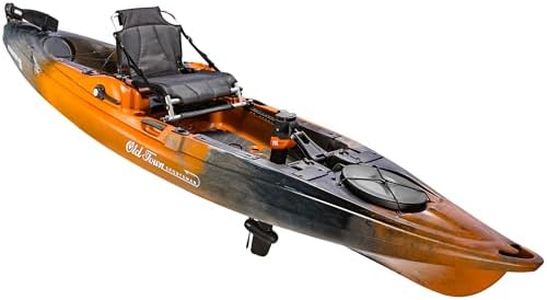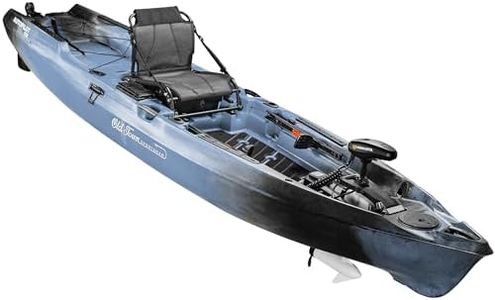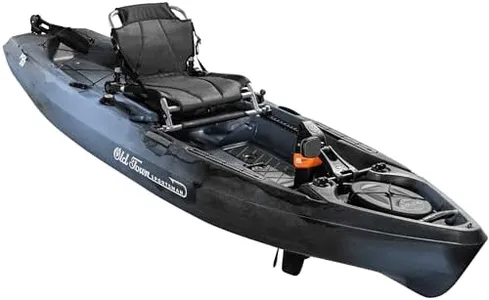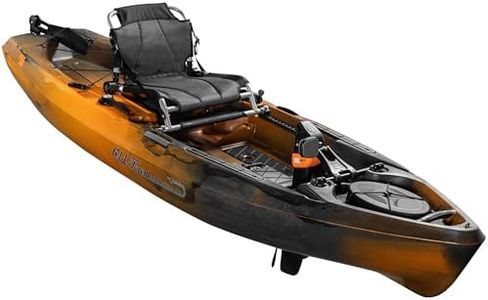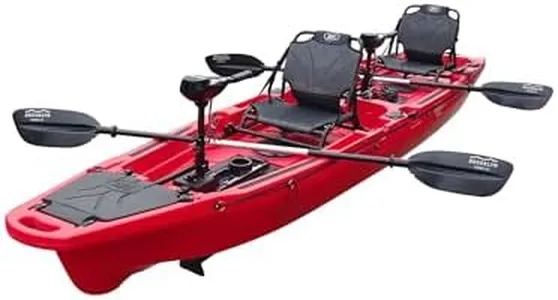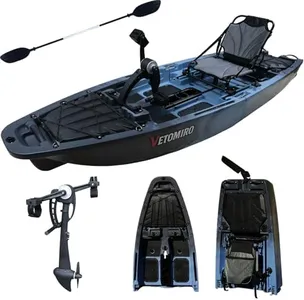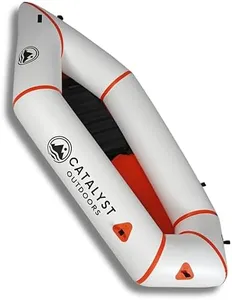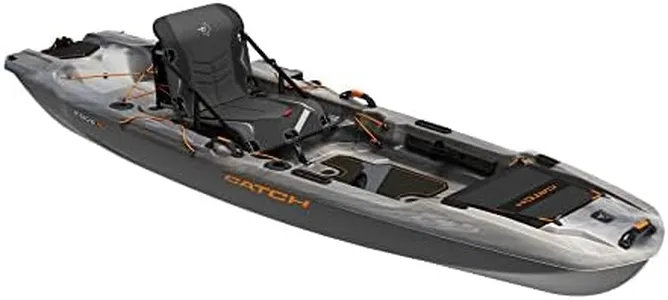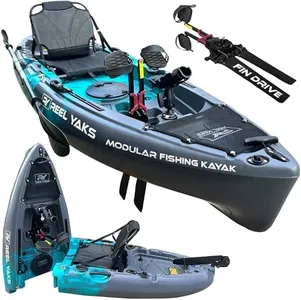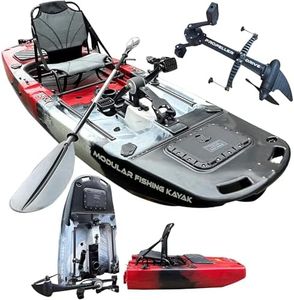10 Best Fishing Kayaks 2025 in the United States
Our technology thoroughly searches through the online shopping world, reviewing hundreds of sites. We then process and analyze this information, updating in real-time to bring you the latest top-rated products. This way, you always get the best and most current options available.

Our Top Picks
Winner
Old Town Sportsman BigWater PDL 132 Pedal Fishing Kayak (Ember Camo)
The Old Town Sportsman BigWater PDL 132 Pedal Fishing Kayak is an excellent choice for open water anglers and tournament fishing enthusiasts. Its standout feature is the easy-to-use forward/reverse pedal drive system, which allows for hands-free navigation and fishing, making it highly convenient. The pedal drive is removable, simplifying transport and storage.
The kayak's 13-foot, 2-inch length and 36-inch width contribute to its impressive stability, an essential factor for fishing in open waters. It boasts a substantial weight capacity of 500 pounds, ensuring you can carry ample gear and catch without worrying about overloading. The premium mesh seat offers excellent lumbar support and adjustability, promoting comfort during long fishing sessions. Additionally, the non-slip EVA foam deck pads provide traction and comfort for standing.
Storage options include a large stern tankwell with removable bungee cords, ideal for carrying coolers or tackle crates, and a sealed bow hatch for dry storage. Multiple rod holders and customizable accessory tracks add to the kayak's convenience. Weighing in at 122 pounds (plus 21 pounds for the pedal console), it may be challenging to transport single-handedly. Another consideration is its price, which might be on the higher side for budget-conscious buyers. Despite these drawbacks, the Old Town Sportsman BigWater PDL 132 excels in delivering a stable, comfortable, and feature-rich fishing experience, making it a worthy investment for serious anglers.
Old Town Sportsman PDL 106 Solo Angler Sit-on-Top Pedal Fishing Kayak, 10ft, Steel Camo
Most important from
14 reviews
The Old Town Sportsman PDL 106 Pedal Fishing Kayak in Steel Camo is designed for fishing enthusiasts who value stability and convenience. At 10 feet 6 inches in length, it's compact and manageable, making it easy to transport and store. With a width that ensures stability and a weight capacity of 450 pounds, it can comfortably support both the angler and their gear. The pontoon-style hull contributes to its stability and quietness on the water, making it ideal for fishing in calm waters.
The pedal drive system allows for hands-free navigation, which is a significant advantage for those who want to focus on fishing without worrying about paddling. The system also includes a forward and reverse function, enhancing maneuverability. One of its standout features is the comfortable mesh seat, which provides excellent lumbar support and is adjustable for different leg lengths, ensuring a comfortable day on the water. The kayak also offers ample storage options, including an oversized tankwell, storage under the seat, side pockets, and a sealed bow hatch for dry storage.
Customizable accessory tracks, rod holders, and a dedicated horizontal rod storage make it easy to manage gear and tackle. However, at 107 pounds, the kayak is relatively heavy, which might be a drawback for solo users when transporting. Additionally, while it offers a lot of storage, it might feel cramped for those who prefer more space. The lack of a paddle included means an extra purchase is necessary for those who want the option. To sum up, this kayak is well-suited for dedicated anglers looking for a stable, feature-rich option that allows for hands-free fishing, though its weight and additional paddle requirement are points to consider.
Most important from
14 reviews
Buying Guide for the Best Fishing Kayaks
Choosing the right fishing kayak can greatly enhance your fishing experience. The right kayak will depend on where you plan to fish, your level of experience, and your personal preferences. It's important to consider various specifications to ensure you get a kayak that meets your needs and provides a comfortable and efficient fishing experience.FAQ
Most Popular Categories Right Now
